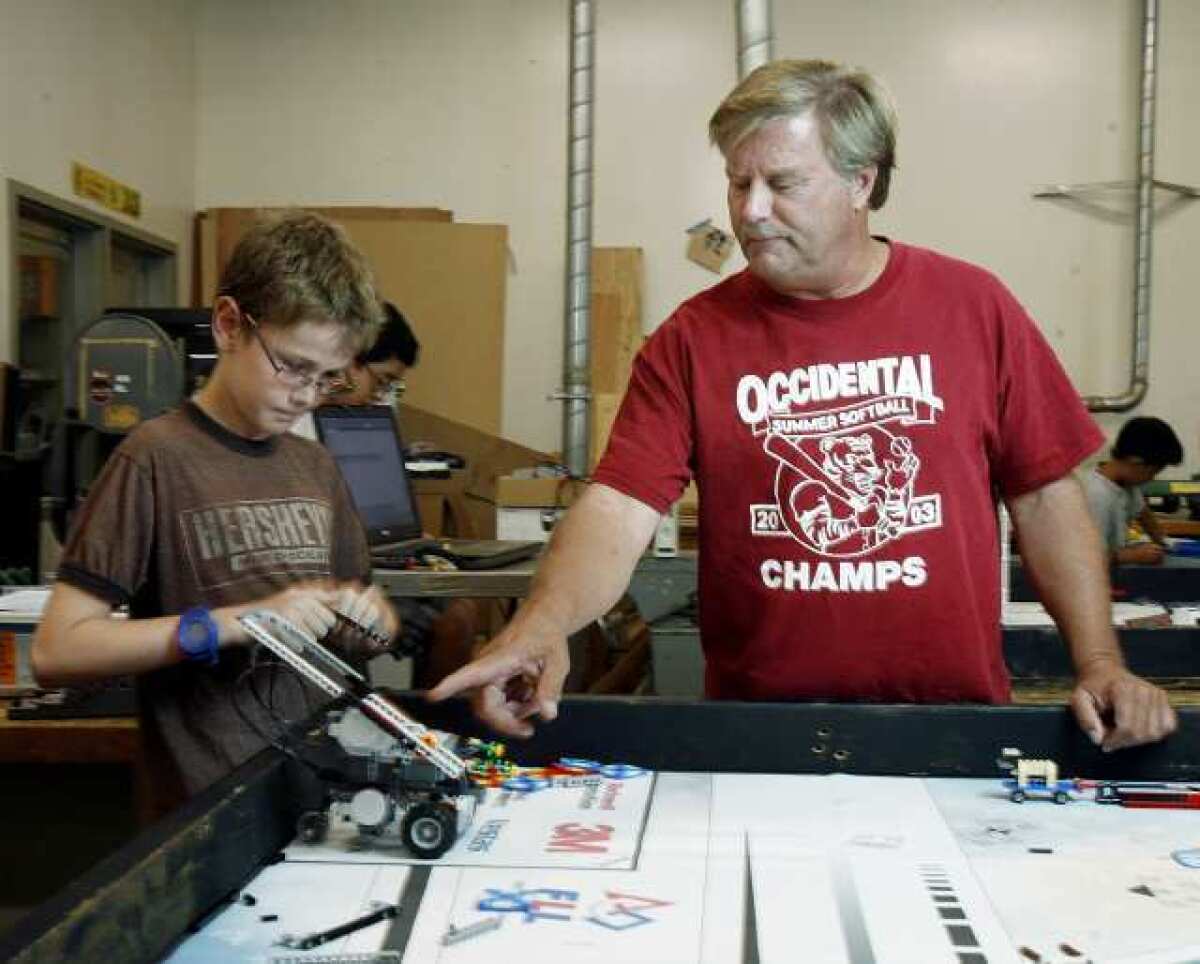Students take the robot challenge

As the space shuttle Endeavour soared over La Cañada Flintridge on Friday afternoon, Palm Crest Elementary School sixth-grader Micah Smyth saw more than an end of an era for NASA. He also saw what he hopes will be his future.
Micah, 11, plans to be an aerospace engineer, and so two days after Endeavour made its last flight, he and 40 other students abandoned the Sunday sunshine for a meeting of the La Cañada Engineering Club.
Inside the former wood shop at La Cañada High School, students from elementary school to high school tinkered with robots placed on surfaces similar to pool tables. Motors, wheels, Lego pieces and gears were scattered about near instructions for building the robots.
Micah is on one of four 10-student teams from La Cañada in a competition called the First Lego League. Sponsored by the New Hampshire-based nonprofit For Inspiration and Recognition of Science and Technology, the competition challenges students from sixth through eighth grades to use Lego components to build robots. The teams square off with other clubs in two-minute, 15-second tests of the robots’ dexterity and the teams’ ability to solve problems.
Older students participate in similar but more sophisticated robot challenges.
All the local teams turn to La Cañada High School chemistry teacher Steve Zimmerman for guidance.
Zimmerman, who launched the engineering club six years ago, said the younger students start assembling Lego robots on their first day in the club, and by day three they are testing the robots’ mobility.
“This is not a class,” Zimmerman said, appreciative of the students’ dedication. “This is all just after school. This is just kids fitting this in between all the other stuff they do.”
Many club members aspire to follow the paths blazed by their parents or previous club members.
Six years ago, Zimmerman said, La Cañada High School student Hima Gudapati walked into the engineering club without any mechanical experience.
“She never drilled a hole, never used a power tool,” Zimmerman said. “But she jumped right in.”
Two years later Gudapati was named club president, leading her crew at the 2010 robotics world championships. Today she is an engineering student at Caltech.
Renata Koontz, a La Cañada High junior who now supervises teams of younger students, said she hopes to be a computer programmer.
Jack Leo Mazin, a Palm Crest sixth-grader, hopes to attend Pomona College and become a designer of roller coasters and amusement park rides.
Micah Smyth’s big dreams may take him just a mile or so up Oak Grove Drive.
“I kind of want to get into Caltech and work at JPL, like my dad,” he said.
Each of the four Lego robots in the engineering lab costs around $300, Zimmerman said. The advanced robots used by older students cost more than $1,000, and the high-school competition robots run to several thousand dollars.
Funds for the robots come from sponsors including JPL — which provided the club with seed money and sends an occasional expert to visit — Google, the La Cañada High School Boosters, local businesses and PTAs, Zimmerman said.
“We’re always looking for sponsors,” he said. “It takes a lot of money.”
Parents also support the club, he added.
“I’m very thankful for the parents,” he said. “They’re always asking, ‘What can I do? What can I do?’”
Renata said robotics requires more than well-honed logic and technical skills. Students also need patience and the ability to improvise under duress.
When it comes to the robots following orders, she said, “There’re always expectations, but it never does work. You always have to trouble-shoot. It’s the same thing if you’re a pilot or a doctor. You learn to adapt. These kids are learning to adapt quickly.”
“Kids must identify what’s wrong and how to fix it,” Zimmerman agreed. “That’s one thing that distinguishes our program. It’s kid-driven.”